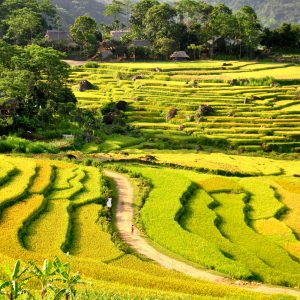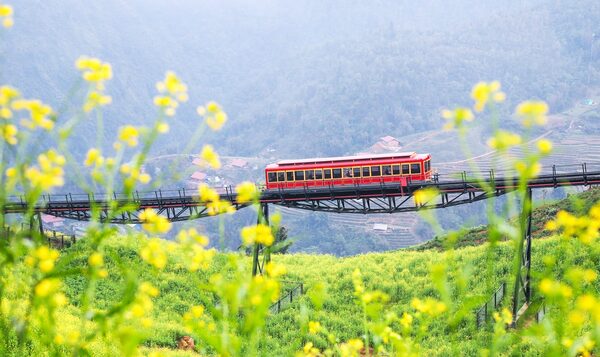Northwest and Northeast Vietnam are among tourist attractions for breathtakingly beautiful rice terraces
Vietnam is one of the largest rice producers and consumers in the whole world. The country holds the second position in rice production after Thailand and ranks seventh in rice consumption. Rice farming plays a fundamental part in the life of many Vietnamese farmers as their main source of income with most of them going to the farms as early as 5.00 a.m. and departing the paddies as late as 10.00 p.m.
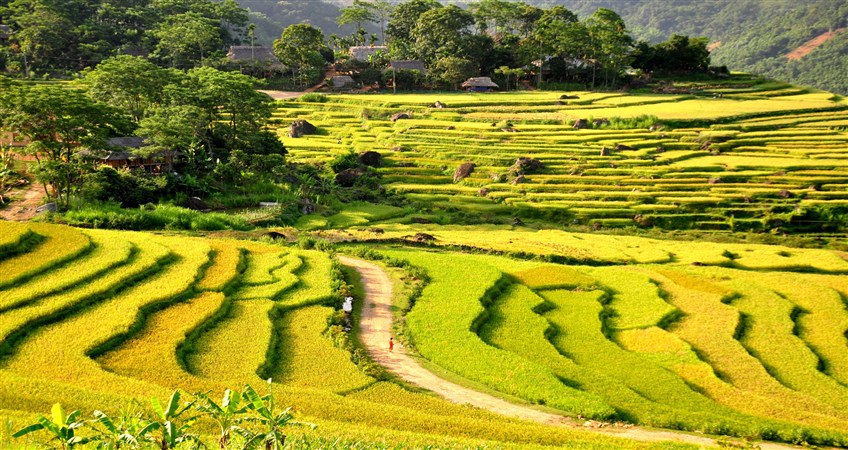
Rice terraces in Pu Luong
There are wide varieties of rice; they come in brown, red, white, amber or black. The grains may be thin or thick and short or long. Normally rice thrives in flooded areas mainly because it requires a continual water supply. For most Vietnamese farmers, Red River and Mekong Delta are their main sources of water for the growth of rice in Vietnam lowland areas. However, for farmers on the highlands, they must rely on mountain steps and high rainfall to grow rice.
Vietnam has two major rice growing seasons: spring and autumn. The farmers in Mekong Delta also enjoy an additional cropping season during winter. Most farmers use conventional methods of growing rice although the modern System of Rice Intensification (SRI) is becoming a popular method among farmers in the lowland regions.
Read more: Beautiful Rice Fields during Harvesting Time in Northern Vietnam
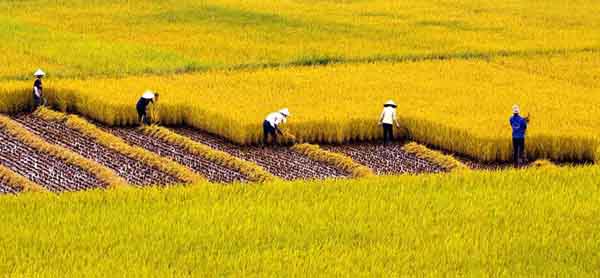
What’s farming method on highland areas?
Most rice farmers in the country use the labor-intensive traditional farming methods in rice production. Rice farming begins by placing the seeds in a seedbed for about 2-3 weeks until they grow three leaves and a height of 20 to 25 centimeters. The farmers then gather the young plants into handfuls and transplant them in a bunch in the growing field. The farmers have to maintain proper spacing between the seeds to maximize their yields.
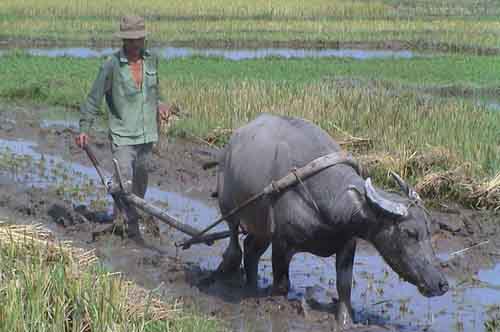
Farmers then spend the next two months tending to the rice farms until the plants are ripe for harvest. Weed removal, considered to be women’s job, is one of the common practice during the growth period while men plough the land with the help of a buffalo in the preparation of the harvest season. The farmers also scoop water from the large irrigation channels using crude tools made of bamboo and sturdy wood to irrigate the smaller rice paddies.
Best places to see rice terraces in Northern Vietnam
The harvesting season that falls in June has attracted most photographers and tourists to the country. That’s the summertime in Vietnam when the terraced rice fields display the stunning green-yellow rice which is a wonder to behold. This beautiful scenery can also be seen until September on the highland areas. Here below are the best amazing places to see rice terraces in Northern Vietnam.
Sapa, located in the northwest of Vietnam, is one of the most famous tourist attractions for rice terrace. Due to climate, only one crop per year is produced. You can see the rice terrace fields in the Muong Hoa valley between Sapa town and Fansipan Mountain. The best time to tour around Sapa should be from June to early October, which is also in harvest season when the terraced rice fields turn into yellow bloom.
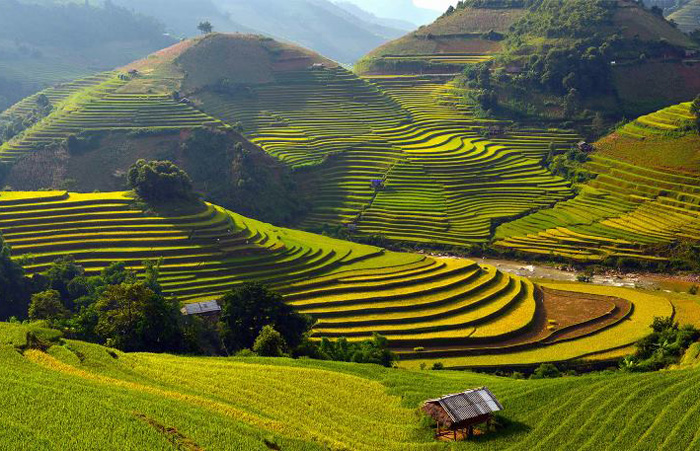
Hoang Su Phi, located in the west of Ha Giang province, has attracted a great number of tourists by wonderful views of terraced rice fields. This place was recognized as the rice terrace National Relics in 2012. Different seasons portray different colors along these terraces. Apart from a tranquil atmosphere, Hoang Su Phi also remains deep cultural values embodied in the farming experiences.
Mu Cang Chai is 300 km away from Hanoi. This place has a fame for its 700 hectares of terraced rice fields that attracts a stream of tourist and photographers visiting between September- October when it’s in the ripe rice season. Soaking up in the aroma of ripened rice crops and the images of stretching terraced rice fields would be unforgettable experiences for anyone reaching this land.
Y Ty, located about 100 km away from Lao Cai province, is named “foggy land” with amazing terraced fields and beautiful earth walled houses belonging to Ha Nhi ethnic group. This place was listed among best mystical destinations in Asia by The US’s Thrillist website. The best time to visit Y Ty is in harvest season around September when the land is entirely covered in the bright yellow crop.
Apart from the mentioned locations, Northern Vietnam tours have much more to offer tourists in terms of scenic rice terraces. There is a large time frame, generally between June and October when tourists can be in awe of the magnificent beauty offered by the rice terraces.

